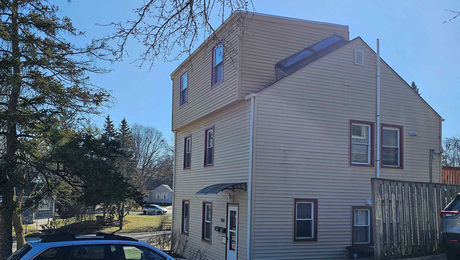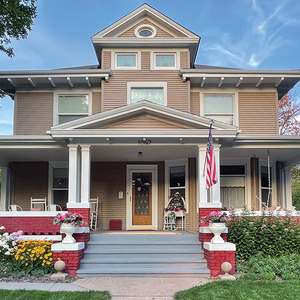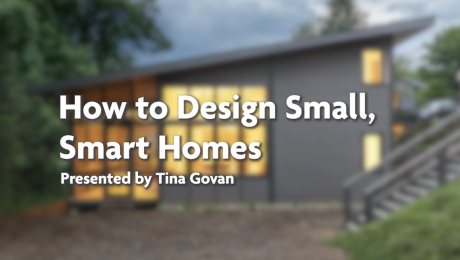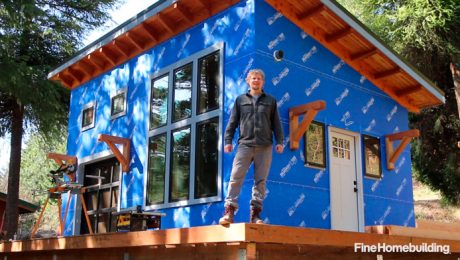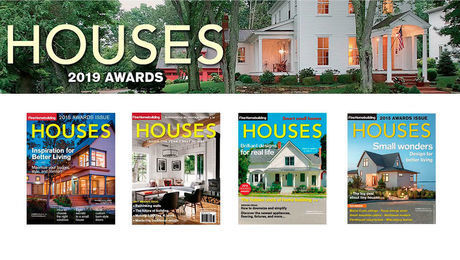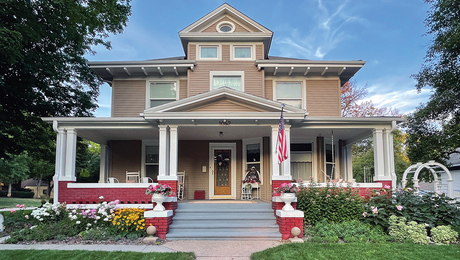The Big Deal About Tiny Houses
Four principles of intentional living from the tiny-house movement
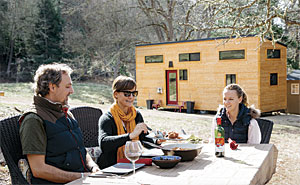
Since the outset of the Great Recession, the burgeoning tiny-house movement has inspired festivals, documentaries, books, magazines, blogs, and TV programs. But despite the pace at which tiny houses have descended into our imaginations, much of the popular coverage begins and ends with their shocking size. By most people’s standards, at 550 sq. ft., Fine Homebuilding’s 2015 best small home is tiny, but tiny houses are actually less than half that small. Within the movement, tiny houses are generally understood to not exceed 250 sq. ft. To be sure, imagining living in such a diminutive space is a lot to consider, but not for the reasons you might suppose.
The average size of a U.S. home in 2006 was 2268 sq. ft.; by 2010, it had dropped to 2100 sq. ft. In his book The New New Home (The Taunton Press, 2014), Boyce Thompson relates a story in which he asked a group of building executives at the Pacific Coast Builders Conference if they thought houses would remain smaller after the recession. They responded, “No one comes into the sales office asking to buy a small home; they want to buy the biggest home they can afford.” Thompson writes, “The panelists schooled me for naively ignoring the driving force of new-home sales—American materialism. People in this country aspire to own a big home on a big lot, they said; it’s ingrained in our culture. That ambition may have been beaten down during the recession, but it resurfaced as soon as the recovery started.” Indeed, it has—as of 2013, the average home size is 2679 sq. ft.
As you peer into tiny-house culture, you begin to see that those who have chosen to build this way arrive at the square footage only through a prior process of personal stocktaking. Square footage is of relative concern when what these houses really embody is an ethos of intentional living.
Perhaps it is true that most people “aspire to own a big home on a big lot,” but a 2014 Harris Poll survey of 2306 people revealed a different picture. One-third of the parents are worried that their children will have to move back in with them due to a lack of affordable housing. One-third of millennials with a mortgage are worried that they will lose their homes because they can’t afford the mortgage payments, and two-thirds of millennials who are not yet homeowners are worried that they won’t be able to afford a home in the first place.
Tiny houses may be capturing imaginations because one can be built or purchased for less than the down payment on an average house. This is not to say that all Americans are keen to own a tiny house, but a 2015 study conducted by the Bloustein School of Public Planning and Policy at Rutgers University indicates that there is a new generation of Americans who are carefully considering their homes and the personal and environmental impact of those homes.
For example, Tammy Strobel and Logan Smith of Portland, Ore., reside in a 128-sq.-ft. house precisely because living according to the materialism ingrained in American culture was having a detrimental effect on their quality of life. Logan recalls his grandfather’s advice, “If you want to double your money, fold it in half, and put it back in your pocket.” Tammy was in the investment-management industry—commuting an hour to and from a 10-hour day at the office—and began to see that “time is a nonrenewable resource.” Time may be money for many, but with time as a priority for Tammy and Logan, their relationship with money has changed. By living with less, they are able to work less and do more with both their time and their money.
The tiny-house movement represents a diverse set of priorities and considerations, but four principles of intentional living can be distilled from it—connectivity, scale, time, and creativity—each of which is contingent upon the other. These principles may help enrich our lives regardless of the size of our homes.
The principle of connectivity is about a commitment to relationships with people and to lessening the impact a home has on the local and global environment. Andrew and Gabriella Morrison have found that the size of a tiny house fosters intimacy with loved ones rather than the potential for avoidance that larger spaces create. Connectivity is also about a relationship to community resources, such as using a local library instead of buying your own books, or joining a local gym instead of exercising at home. Tiny-housers have done an excellent job of exploiting the benefits of digital community as well. Through a variety of social-media platforms, they have created rich havens of camaraderie, insight, and solutions to the unique challenges they face, from zoning to heating to design to conflict resolution.
The principle of scale has less to do with the size of a home and more to do with creating a living space that is in proportion to how we actually live. Who lives in our home? What do we do in it and where? What possessions do we use or not use, and how do we store these things? How does the design of our home complement the needs and activities of those who live there? In the heart of the recession, these kinds of considerations resulted briefly in builders creating smaller homes and replacing antiquated formal rooms with open spaces designed to act as versatile areas for eating, working, entertaining, and so on. By taking inventory of how we actually live as opposed to how we think we live, we can more closely match the size of our homes to the scale of our lives.
If time is money, one must factor the total and hidden costs a larger home demands (see “Do the math,” below). It is a useful exercise to calculate how many days you must work in a month to earn enough to make your mortgage payment. That number alone is worth thinking about. But then add in the time it takes to keep the house clean and maintained. Subtract the time out of any given day you are away from home or sleeping. When you are home, how much time do you spend in each part of the house? A tiny house leaves more resources and more time in your life to connect with friends and family and to pursue your interests.
Tiny houses call for a great deal of creative energy and serious ingenuity. Efficient design will save time when the space we live in is suited to how we actually live. Creativity also provides connection in that the house, often built and designed by the owner, has been entirely personalized through the process of making a house a home.
No free society is free of contradictions, as our current housing market and economic climate suggest. The tiny-house movement is a response to these conditions of modern life. Our culture is nothing if not a vast expression of all the approaches to what has been described here in terms of connectivity, scale, time, and creativity. It is precisely this magnificent anarchy of ideas that gives form to our sense of home.
Meet the Morrisons
Andrew and Gabriella Morrison work and live in a 207-sq.-ft. tiny house on five acres in Oregon with their homeschooled 14-year-old daughter, Terra, and their dog, Oscar. They decided to build this home after living together in a pop-up trailer in Baja for a few months. They had sold a 2200-sq.-ft. home that they felt was tearing them apart in terms of expense and as a family.
The Morrisons built their tiny house for $33,000 out of pocket, and they call it “hOMe,” using the mystic mantra as a reminder of their commitment to prioritizing joy. They exemplify intentional living and the four principles of connectivity, scale, time, and creativity.
Power for this off-grid home is supplied by a 1600w PV system that charges four deepcycle batteries. This system supplies enough energy for a fridge, laptops, TV, lights, and other needs. Every month and a half, the Morrisons use a generator to power up their well pump to fill a 1500-gal. water tank that sits on a hill near the house. Hot water comes from a propane-fueled tankless water heater.
Connectivity
The Morrisons buy their food from friends at a farmers market and try to share every meal together in order to stay connected to the land, their community, and each other.
Scale
The Morrisons lead active lives, and as a result, they scaled down their house in many areas. Because food is central to their lifestyle, though, the kitchen is one area where they wanted plenty of space—both for working together to prepare meals and for having room to put in a full-size sink, refrigerator, and stove.
Time
With fewer expenses, the Morrisons have more time to spend with each other and to pursue their interests. Andrew and Gabriella work from home, and they homeschool Terra. Andrew can head down to the ice rink in town and practice hockey at any time of the day without running into crowds. The same is true for Terra when she wants to go to the local stables and ride her horse.
Creativity
By thinking through every detail, the Morrisons save time by creating a home that is scaled to work well with the way they actually live, and they have the added benefit of feeling connected to a home they have made with their own hands.

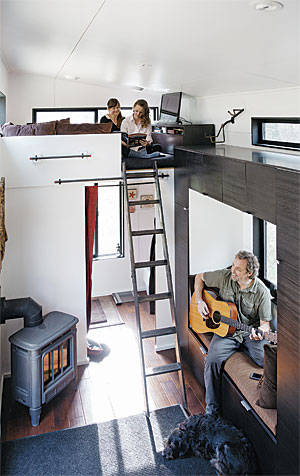
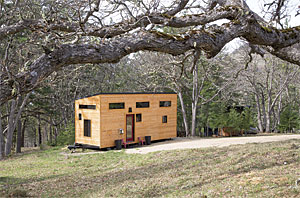

Do the Math
Whether or not you would consider living in a tiny house, you may find it revealing to determine if the scale of your life matches how you think you live and how you actually live. Taking stock is simply a matter of doing the math and seeing what the numbers mean to you.
Monthly mortgage ÷ net monthly income × 100 = % of net income
Example based on national average:
$1061 ÷ $3269 × 100 = 32%
(Banks advise less than 28%)
When you consider how much of your time and money go toward housing alone, is that acceptable? Be sure to factor in the rest of your monthly expenses related to your home. Weigh the amount of time you must work to meet those expenses against the amount of time you actually spend at home.
Where in your home do you spend your time? What percentage of the home’s square footage does that represent? Is that still acceptable?
The Law of the Land
The American Tiny House Association was formed this year to work with local government agencies to modify zoning and coding regulations that often prohibit tiny houses. Most places in the United States require that homes built on a foundation be larger than 500 sq. ft. As a result, most tiny houses are built on trailers. RV and mobile-home parks often prohibit them, however, because they are not constructed by a licensed manufacturer. Even if you park a tiny house on your own land, many jurisdictions see this as camping and restrict you to 30 days or prohibit it altogether.
Washington State Rep. Brian Blake is the sponsor of House Bill 1123, which would bar counties and cities with fewer than 125,000 people from setting minimum dimensions for single-family homes, unless needed for fire and safety reasons. “We’re just trying to create some flexibility so folks who may want to build smaller structures that are more energy efficient are able to,” Blake told tdn.com in January. “They may not want a 3000-sq.-ft. home.”
Photos by Daniel Cronin (dcroninphoto.com).
